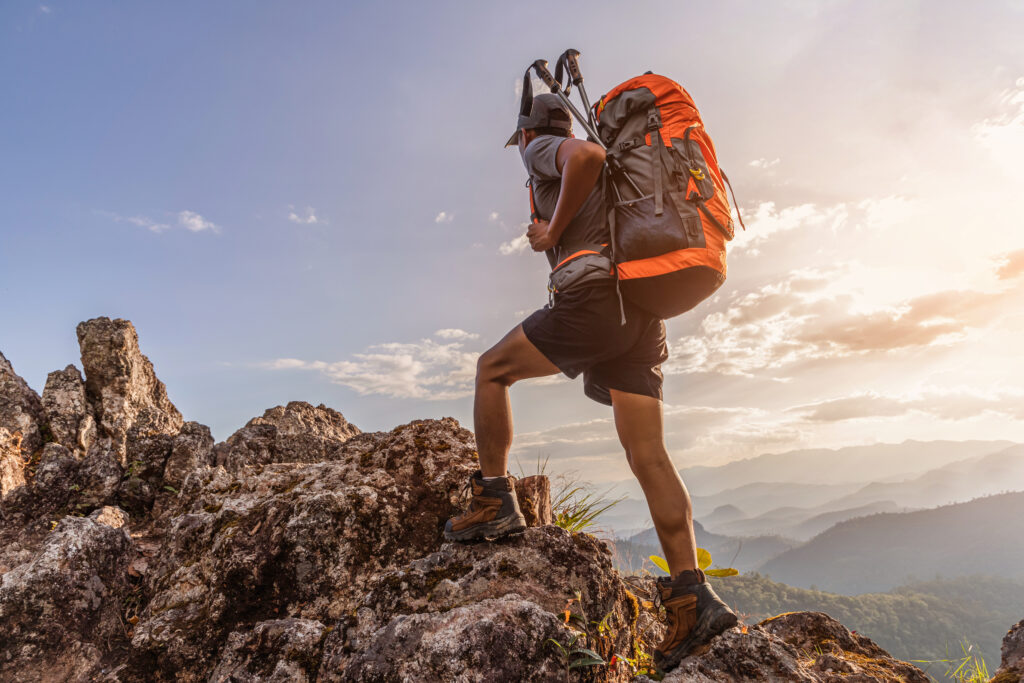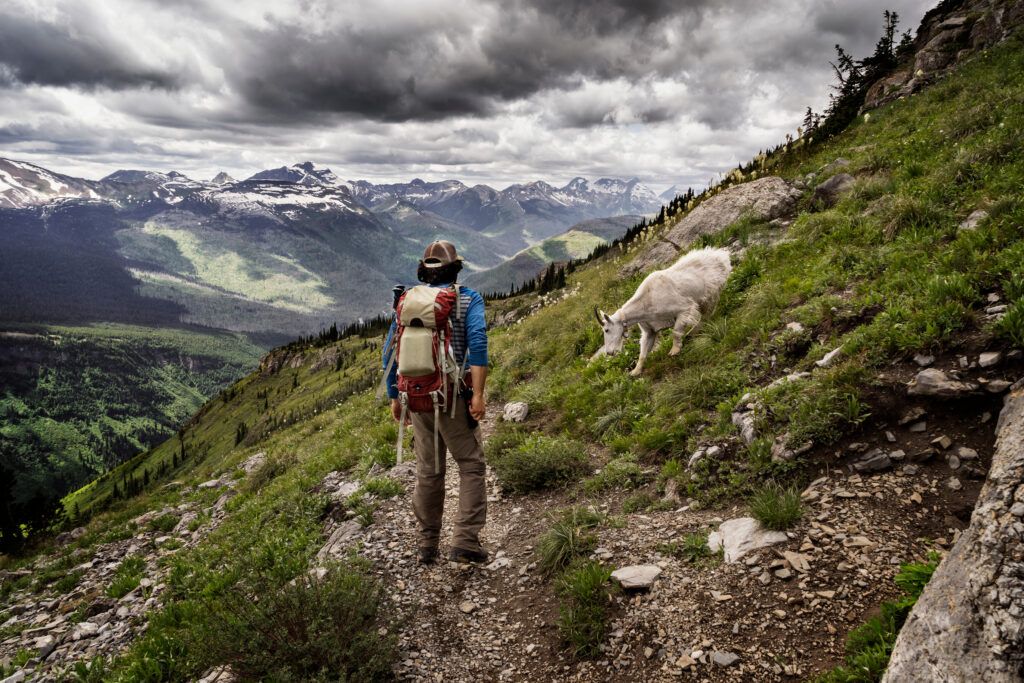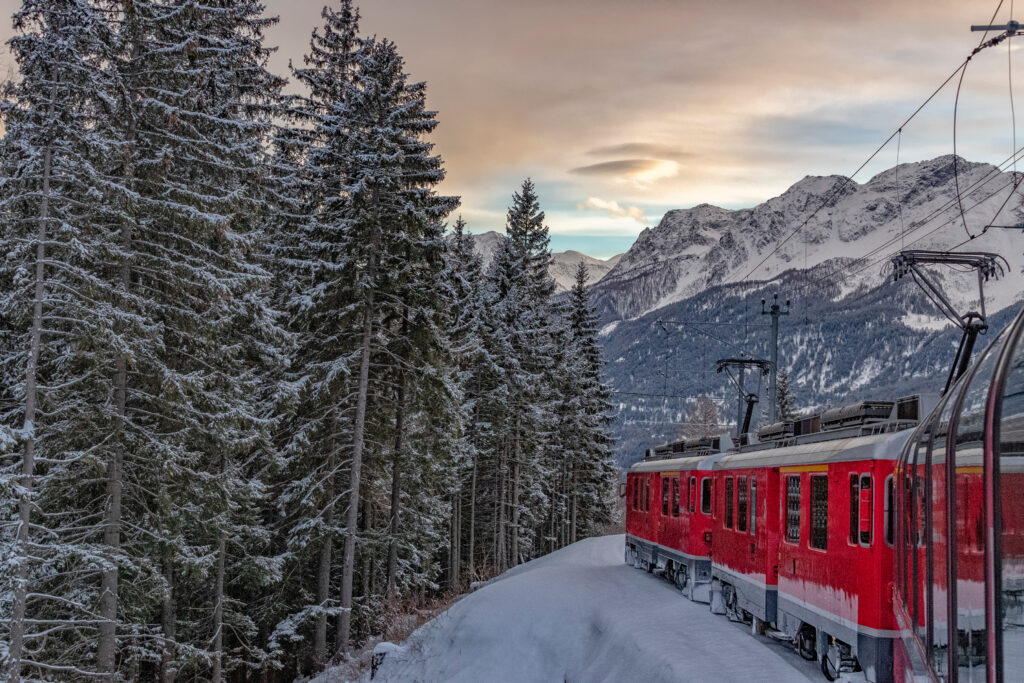
When hiking, protecting the mountains is essential, as they are a particularly fragile environment. Each and every one of our actions has an impact on this natural environment and its inhabitants. Fortunately, there are simple, practical steps you can take to limit your footprint.
1. Don't disturb the animals

Protecting the mountain while hiking starts with taking care of its inhabitants: the various animals that populate it. While sightings are often a joy for hikers, they should never be at the expense of the wildlife. You must therefore maintain a reasonable distance from the animals, and never try to approach them, let alone touch or feed them. In their presence, also avoid being too noisy or using a drone, which they might mistake for a predator. Don't hesitate to take binoculars with you, so you can observe them even from a distance. And don't forget to keep your distance from the herds, which can be protected by aggressive sheepdogs.
2. Don't swim in mountain lakes
After a long hike, swimming in a crystal-clear lake with cool waters is a dream come true. However, these are generally particularly sensitive natural environments. There's nothing harmless about your little dip, as it will bring along bacteria, cosmetic or sun cream residues, textile microfibers, and alter this ecosystem. In particular, there's a risk of eutrophication, i.e. excessive enrichment of the water with nutrients.
3. Don't pick plants
The urge to pick pretty plants along the way can be tempting, whether to compose a beautiful bouquet or to add to a herbarium. But some plants are rare or fragile, and sometimes even protected, so picking them can alter their reproductive cycle. In fact, all French national parks in the mountains prohibit picking and mineral extraction.
The article to read: discover the mountains without damaging nature by reading our article on theenvironmental impact of climbing Everest.
4. Pick up all your garbage
A simple gesture to adopt when hiking to protect the mountain is tocarry a small garbage bag, preferably reusable, to collect all the garbage you produce during your walk. Some hikers even take advantage of their excursion to leave the area even cleaner than they found it, by picking up any garbage they come across left by others. This is regenerative tourism, which aims not only to avoid a negative impact, but even to have a positive impact on the natural environment.
5. Don't make campfires

Fire is forbidden in most mountain areas to avoid causing fires. But even when it is controlled, it has an impact on the ecosystem, since it destroys vegetation both by marking the ground and by requiring the removal of branches to be fed, and it alters the nature of the soil. If you want to cook, take a stove with you, making sure that it is not forbidden in the region you are visiting. As far as this equipment is concerned, you can go even further by choosing second-hand hiking gear.
6. Stay on the beaten track
Walking off the beaten track carries several risks, both for the environment and for other hikers. Firstly, it causes erosion, i.e. the degradation and subsidence of the soil. You also run the risk of trampling rare or protected plants, and disturbing animal habitats. Last but not least, you run the risk of creating alternative routes that could mislead other walkers. Staying on the marked trails is the best way to protect nature in all circumstances, even outside the mountains.
The article to read: go further with our 10 tips for eco-responsible travel.
7. Respect bivouac regulations
Bivouacking, i.e. setting up a rough camp between sunset and sunrise, is authorized in some natural areas, but not all, and is sometimes regulated. Some parks, such as the Mercantour National Park, authorize bivouacs provided they take place at least one hour's walk from the park boundaries or main roads, and prohibit camping in vehicles. Other regions, such as the Vanoise National Park, only allow bivouacs close to refuges. Find out online or from a tourist office about the regulations governing bivouacs in the natural region you wish to explore.
8. Keep your dog on a leash

Even when trained and not too aggressive, a dog is perceived by wildlife as a predator. They can therefore be very disruptive. During the breeding season, i.e. spring and summer, for example, dogs can scare off young birds and prevent them from finding their mothers. This is particularly common with fawns. It is therefore essential to keep him on a leash in natural areas. In grazing areas, a dog may even be perceived as a threat and attacked by patous. Some protected areas prohibit dogs, even on a leash: find out more before you set out on your hike, to protect the mountains.
9. Close fences behind you
When hiking, to protect the mountain, remember that you're sharing it with herds. You'll often be crossing pastures, some of which are fenced off. It's essential to close all fences behind you to prevent the herd from dispersing or being exposed to the danger posed by roads.
10. Favoring eco-responsible modes of transport

Finally, to better protect the mountains when hiking, go one step further by choosing eco-responsible modes of transport whenever possible to reach your hiking destination. Choose trains or buses, or organize a car pool to reduce your carbon footprint. For ideas of mountain destinations easily accessible without a car, read our article on ski resorts accessible by train.
Tempted by our selection? Book your train tickets now to take advantage of the best fares:


